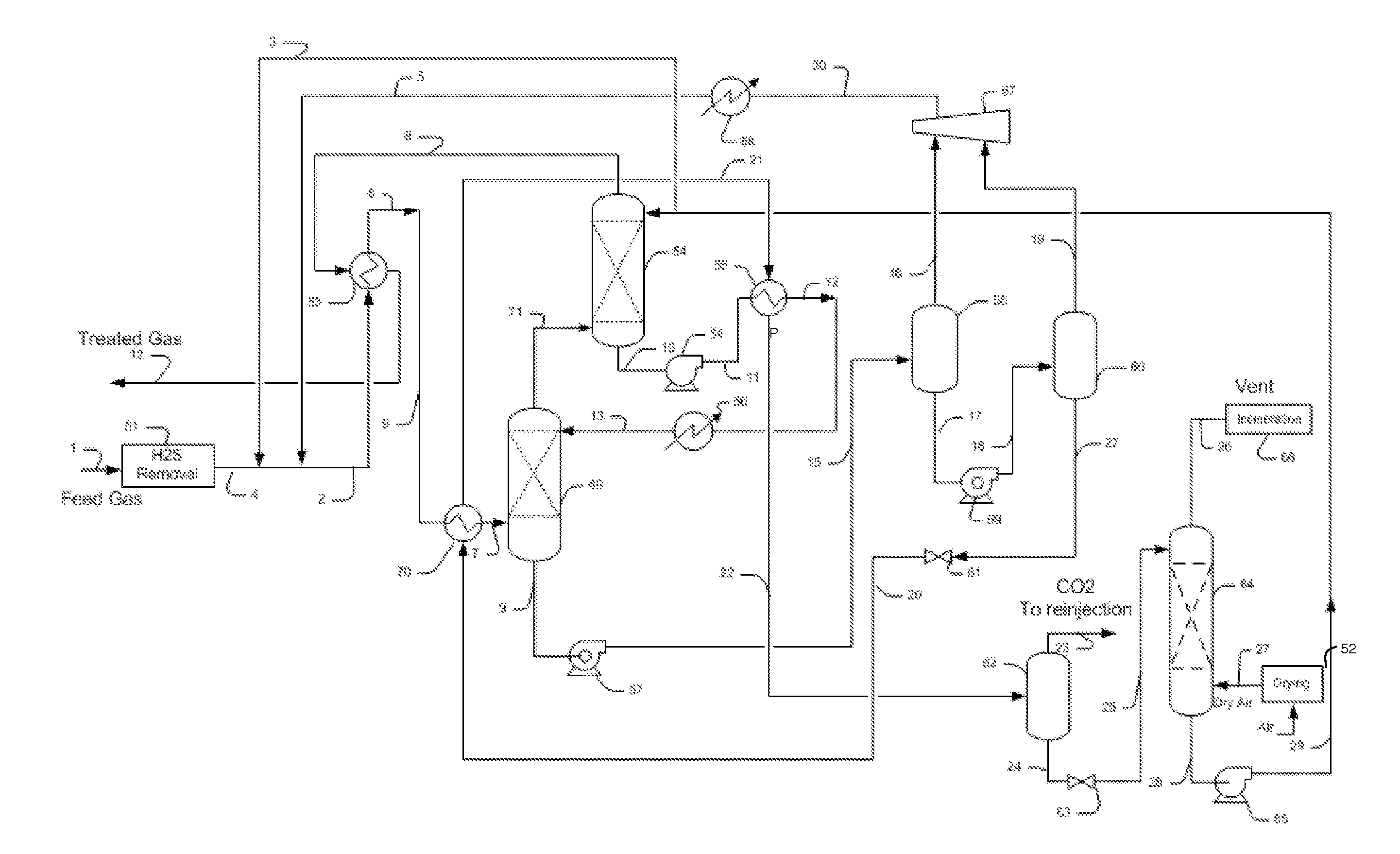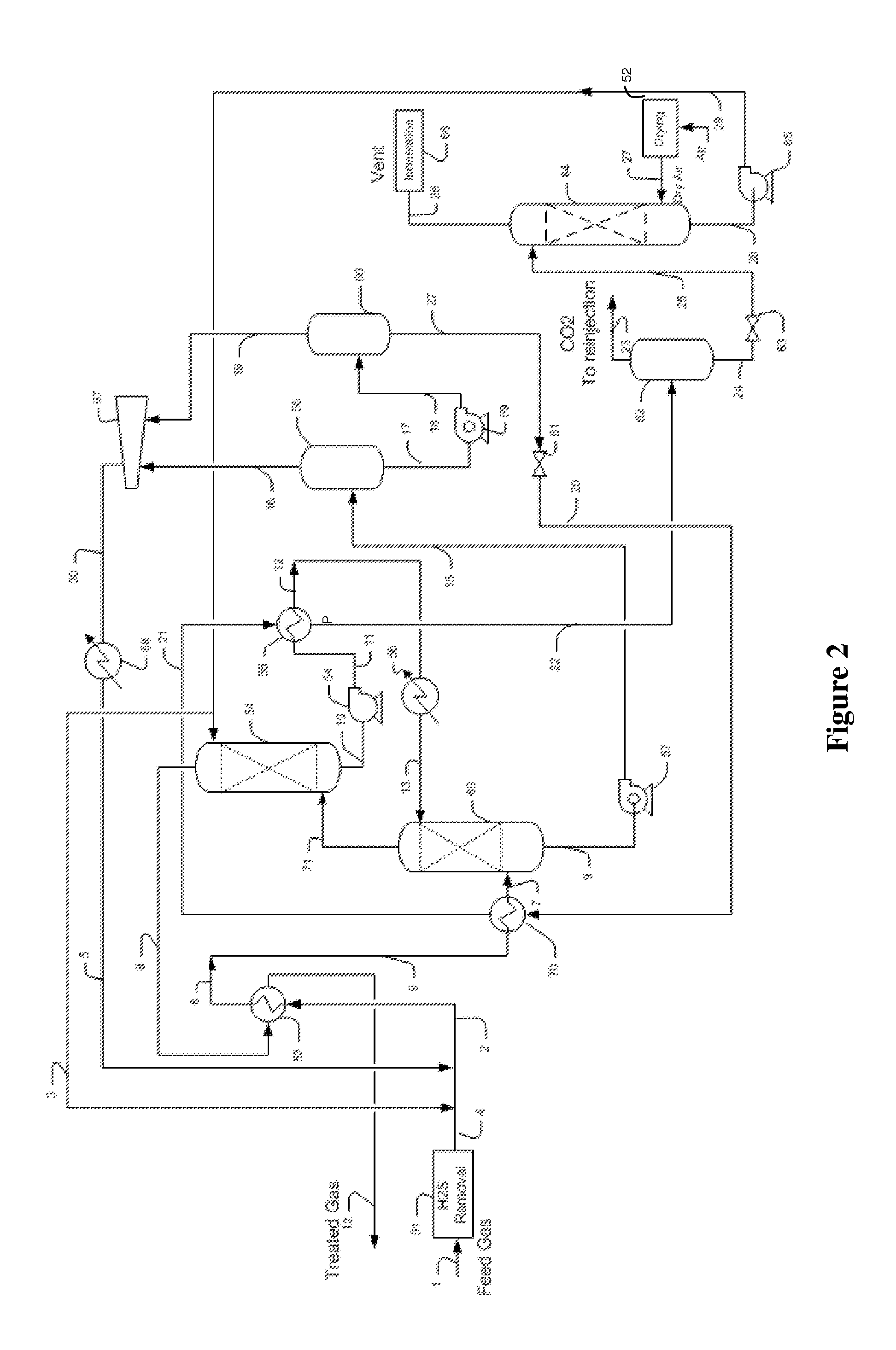Configurations and methods of flexible co2 removal
a co2 removal and flexible technology, applied in the field of acid gas removal, can solve the problems of high co2 content gas fields that remain undeveloped, membrane elements are prone to fouling and material degradation, and gas fields with high co2 content are often considered uneconomical
- Summary
- Abstract
- Description
- Claims
- Application Information
AI Technical Summary
Benefits of technology
Problems solved by technology
Method used
Image
Examples
Embodiment Construction
[0023]The inventor has discovered that acid gases, and predominately CO2, can be removed in a conceptually simple and effective manner to meet stringent CO2 specification of 500 ppmv to 0.5 mol % from a feed gas that contains H2S and variable CO2 content ranging from 5 mol % to 60 mol % CO2 at pressures ranging from 300 psig to 1100 psig, or even higher.
[0024]In especially preferred methods, H2S is preferentially, and more typically selectively removed from the feed gas prior to CO2 removal that is carried out in one or more absorbers. Deep solvent regeneration is achieved in an economic manner by dry air stripping, which will allow the circulating solvents to remain in a dry state. Such regeneration and solvent chilling (e.g., to −15° F. to −25° F.) in combination with sequential acid gas removal is particularly effective to maximize solvent loading and to minimize solvent circulation, and to allow use of the same plant to treat varying concentrations of CO2 in the feed gases, whil...
PUM
| Property | Measurement | Unit |
|---|---|---|
| pressure | aaaaa | aaaaa |
| water dew point | aaaaa | aaaaa |
| temperature | aaaaa | aaaaa |
Abstract
Description
Claims
Application Information
 Login to View More
Login to View More - R&D
- Intellectual Property
- Life Sciences
- Materials
- Tech Scout
- Unparalleled Data Quality
- Higher Quality Content
- 60% Fewer Hallucinations
Browse by: Latest US Patents, China's latest patents, Technical Efficacy Thesaurus, Application Domain, Technology Topic, Popular Technical Reports.
© 2025 PatSnap. All rights reserved.Legal|Privacy policy|Modern Slavery Act Transparency Statement|Sitemap|About US| Contact US: help@patsnap.com



